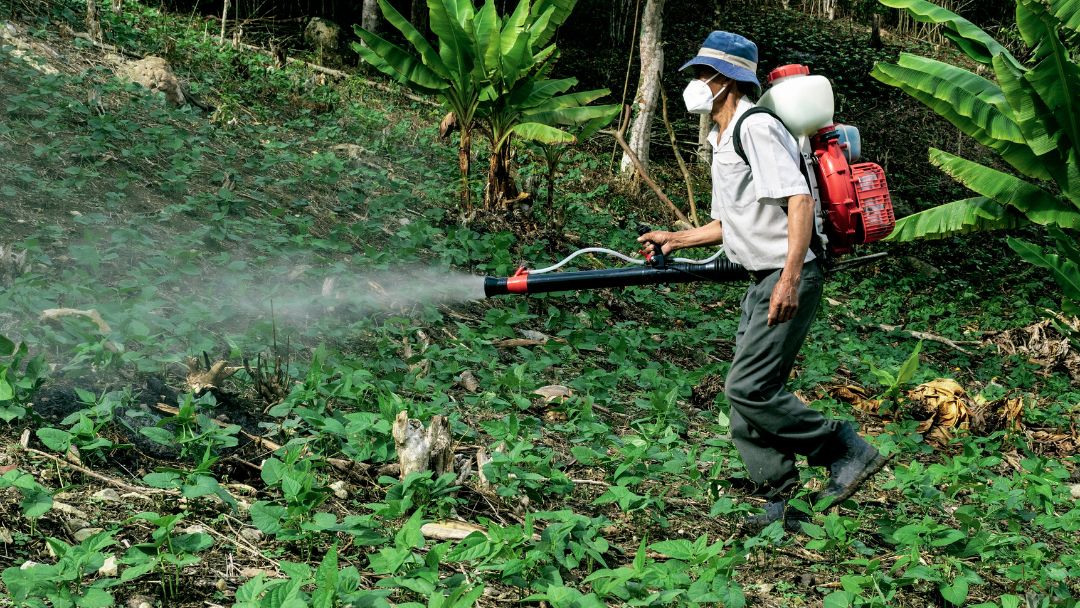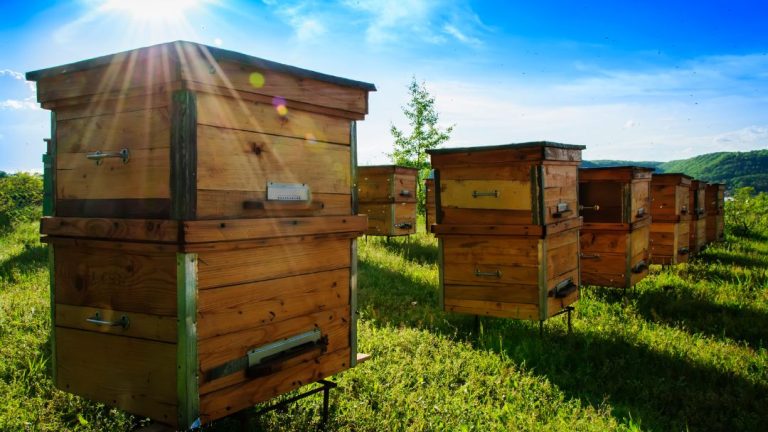Bees And Pesticides: What Is Safe? Find Out the Truth!
Bees and pesticides: safety depends on responsible usage and selecting less harmful options. With the growing concerns about pollinators’ health and the impact of pesticides on their populations, it is essential to understand the safe practices for using pesticides without harming bees.
By adopting integrated pest management strategies, minimizing pesticide exposure, using selective and targeted products, and promoting alternative pest control methods, we can create a safer environment for bees and minimize their exposure to harmful chemicals.
This article explores the importance of bee safety, and the risks associated with pesticides, and provides practical tips for using pesticides responsibly to protect these vital pollinators.
Together, we can strike a balance between pest control and preserving the health and well-being of bees.
The Importance Of Bees In Our Ecosystem
Bees play a vital role in maintaining the balance of our ecosystem. They are not just small insects buzzing around; they are the unsung heroes that help sustain life on Earth. Here we explore their significance as pollinators, their role in food production, and the alarming decline in bee populations.
Bees As Pollinators
Bees are exceptional pollinators, facilitating the reproduction of flowering plants through their unique feeding behavior. As they collect nectar from flowers, pollen sticks to their bodies and legs. This pollen, carried from one flower to another, ultimately leads to cross-pollination, enabling plants to produce fruits, seeds, and new plants.
Role In Food Production
The role of bees in food production cannot be overstated. Through their pollination efforts, bees contribute to the growth of various crops, including fruits, vegetables, nuts, and oilseeds. One-third of the food we consume depends on bee pollination, making them essential for ensuring a sustainable and diverse food supply.
Decline In Bee Populations
In recent years, there has been a concerning decline in bee populations worldwide. This decline is attributed to various factors, including the use of pesticides and habitat loss. Pesticides, specifically neonicotinoids, have been strongly linked to adverse effects on bee health and colony survival. As bees come into contact with these chemicals, their navigation systems, reproduction, and immune systems are negatively affected.
If we do not take immediate action to protect bees and their habitats, the consequences could be dire. It’s crucial to prioritize sustainable agricultural practices and reduce the use of harmful pesticides to ensure the preservation of these vital pollinators.

Understanding Pesticides And Their Impact On Bees
Bees play a crucial role in our ecosystem as pollinators, but their survival is being threatened by the use of pesticides. It is important to understand the different types of pesticides, how they affect bees, and the findings of studies on pesticide toxicity. By gaining this knowledge, we can make informed choices that promote the protection of bees and ensure a safe environment for their pollination activities.
Different Types Of Pesticides
Pesticides can be classified into several categories based on their chemical composition and purpose. The major types of pesticides include:
- Insecticides: These are designed to kill or repel insects that are considered pests, such as aphids, beetles, and mites. They can be further categorized into organophosphates, pyrethroids, and neonicotinoids.
- Fungicides: These are used to control fungal diseases in plants, which can damage crops. They are commonly applied to prevent the growth of mold, mildew, and rust on fruits, vegetables, and grains.
- Herbicides: These are specifically designed to kill unwanted weeds and other unwanted plants. They are often used in agricultural settings to maintain crop yields by minimizing competition from invasive plant species.
- Rodenticides: These are used to control rodent populations, including rats and mice, which can cause damage to crops, buildings, and infrastructure.
How They Affect Bees
The impact of pesticides on bees can vary depending on the specific chemical composition of the pesticide and how it is used. However, many pesticides have been found to have detrimental effects on bees, potentially leading to their decline and endangerment. Some of the ways pesticides can harm bees include:
- Direct exposure: Bees can come into direct contact with pesticides when foraging on plants that have been treated with pesticides or when the pesticides are sprayed directly onto the beehive. This exposure can result in immediate harm or death to the individual bee.
- Contamination of food sources: Pesticides can contaminate nectar and pollen, which are the primary food sources for bees. When bees consume contaminated food, they can experience negative effects on their physiology and overall health.
- Sub-lethal effects: Even low-level exposure to pesticides can have sub-lethal effects on bees. These effects might include impaired navigation, reduced immune function, and decreased ability to reproduce. Over time, these sub-lethal effects can have significant consequences for the overall health and survival of bee colonies.
- Indirect effects on ecosystems: Pesticides can disrupt the delicate balance of ecosystems by harming not only bees but also other beneficial insects, birds, and animals. This can have wide-ranging ecological implications, affecting the biodiversity and functioning of our natural environments.
Studies On Pesticide Toxicity
Scientists and researchers have conducted numerous studies to evaluate the toxicity of pesticides and their impact on bees. These studies have provided valuable insights into the specific chemicals and their effects. Some key findings from these studies include:
| Study | Key Findings |
|---|---|
| Study 1 | Pesticide X is highly toxic to bees, causing high mortality rates even at low concentrations. |
| Study 2 | Neonicotinoids, a widely used class of insecticides, can impair bee navigation and foraging abilities. |
| Study 3 | Fungicides containing chemical Y can disrupt the gut microbiota of bees, leading to increased susceptibility to diseases. |
These studies highlight the need for continued research and regulation to identify safer alternatives to hazardous pesticides and develop responsible practices that minimize the negative impact on bees and other pollinators.
Evaluating The Safety Of Pesticides On Bees
Understanding the safety of pesticides on bees is crucial in ensuring the well-being of these important pollinators. Various factors are taken into account when evaluating the safety of pesticides, including regulatory measures, testing methods, and guidelines, as well as potential long-term effects and cumulative exposure.
Regulatory Measures For Pesticide Safety
Regulatory measures play a vital role in ensuring that pesticides are safe for both the environment and bees. Government agencies, such as the Environmental Protection Agency (EPA), establish regulations and guidelines that pesticide manufacturers must adhere to before their products can hit the market.
These measures include rigorous testing to assess the potential risks and impacts that pesticides may have on bees. By setting tolerance levels and requiring certain safety protocols, regulatory bodies aim to limit the negative effects of pesticides on these fragile insect populations.
Testing Methods And Guidelines
Testing methods and guidelines are developed to assess the effects of pesticides on bees accurately. Scientists and researchers follow these protocols to determine how pesticides can impact bees at various stages of their lifecycle.
One common testing method is acute toxicity testing, which measures the immediate effects of a pesticide on bees. This test analyzes the mortality rate and other acute symptoms that may occur shortly after exposure to a pesticide.
Additionally, chronic toxicity testing evaluates the long-term effects of repeated exposure to pesticides. This type of testing helps determine the potential cumulative impact of pesticide residues in beehives over time.
Long-term Effects And Cumulative Exposure
The long-term effects of pesticides on bees and their cumulative exposure are essential considerations when assessing safety. Pesticides can have delayed effects, meaning that bees may not display symptoms immediately after exposure but can experience negative impacts later on.
Furthermore, cumulative exposure to pesticides can occur through multiple routes, such as direct contact, oral ingestion, or exposure to contaminated pollen and nectar. This cumulative exposure can have detrimental effects on bee colonies, leading to population decline and an overall decline in ecosystem health.
Understanding the long-term effects and cumulative exposure is vital in developing strategies to minimize the risks posed by pesticide use. By considering these factors, scientists and regulators can work together to mitigate the potential harm caused to bees and ensure sustainable agriculture practices.
Promoting Bee-friendly Pest Management
When it comes to protecting bees and promoting a healthy environment, it is crucial to prioritize bee-friendly pest management. By implementing alternative pest control methods, organic farming practices, and supporting bee conservation efforts, we can create a safe and sustainable environment for both bees and humans.
Alternative Pest Control Methods
One effective way to promote bee-friendly pest management is by adopting alternative pest control methods. These methods prioritize the use of natural, non-toxic substances to control pests and diseases. For instance:
- Encourage the use of biological controls such as introducing beneficial insects or predatory mites that feed on pests.
- Crop rotation is another impactful method as it disrupts pest life cycles and reduces the need for chemical pesticides.
- Physical barriers, such as nets or screens, can be installed to block pests from reaching plants without harming bees or other beneficial insects.
By opting for these alternative methods, farmers and gardeners can minimize the risks posed to bees without compromising crop yields.
Organic Farming Practices
Organic farming practices go hand in hand with bee-friendly pest management. By eliminating the use of synthetic pesticides, organic farmers promote a healthier ecosystem for bees. These practices include:
- Companion planting is a technique where certain plant combinations are used to naturally repel pests or attract beneficial insects.
- Mulching helps suppress weeds and provides additional nutrients to plants, reducing the need for chemical herbicides.
- Biological pest control involves using natural enemies of pests, such as parasitic wasps or nematodes, to keep their populations in check.
Organic farming practices not only protect bees but also contribute to the overall quality and safety of the food we consume.
Supporting Bee Conservation Efforts
Another vital aspect of promoting bee-friendly pest management is supporting bee conservation efforts. Bees play a crucial role in pollination, and their decline threatens not only food production but also biodiversity. Here’s how individuals and communities can contribute:
- Planting bee-friendly flowers in gardens, parks, or even on balconies can provide bees with a diverse and nutrient-rich food source.
- Avoiding the use of pesticides in home gardens helps protect bees that visit our flowers.
- Participating in citizen science projects aimed at monitoring and understanding bee populations can provide valuable data for conservation efforts.
By taking these steps and actively supporting bee conservation initiatives, we can ensure that bees continue to thrive and contribute to a healthier ecosystem.
Conclusion
To protect our precious bee population and maintain a healthy ecosystem, it is crucial that we find a balance between pesticide use and its impact on these pollinators. By reducing the use of harmful pesticides and adopting more sustainable practices, we can create a safe environment for bees.
It is our responsibility to support organic farming, promote biodiversity, and raise awareness about the harmful effects of pesticides, ensuring a future where bees can thrive and continue the vital work they do. Together, we can safeguard these invaluable creatures for generations to come.



